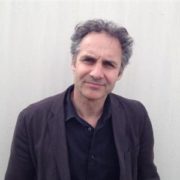TAH interview Arjan de Koomen, University of Amsterdam
What are the most important research questions being asked in TAH?
Within TAH we adhere to the idea that the study of the making of art objects offers a more complete understanding of the development of art, and that it can offer new explanations for artistic change and traditions (for example, if we see non-change). Moreover, we assume that the material and technical perspective brings us closer to the so-called intention (and limitations) of the artist. Thirdly, we believe that TAH offers a better understanding of individual works of art and often serves as a test for the validity of a wide variety of interpretations put forward by art historians. Beyond all that, we might say that the most important research questions is whether these asssumptions can be substantiated.
Do you consider TAH a sub-field of art history?
As its name implies, it is form of art history. However, in most cases TAH has developed outside a strict art historical environment. It often flourishes in the domain of conservation studies. The connection to conservation is certainly very fruitful. Nevertheless, De Koomen is convinced it ultimately finds its place within the discipline to which it belongs: art history.
Is TAH ‘an enhanced and more scientific’ connoisseurship?
De Koomen does not fully agree. He argues that TAH functions as a form of ‘enhanced connoisseurship’ only in certain cases. If so, it is usually by de-attributing a work of art when the results of scientific analysis exclude a certain attribution, rather than by positively making attributions to certain artists through technical means. We have not come that far that TAH has replaced the subtle art of connoisseurship – we can’t offer a technique as precise as -say- DNA-matches.
What do you see as the major challenges in TAH education?
To establish a place for TAH in universities’ teaching system. Therefore, art historians in academic circles not involved in TAH have to become convinced that we can no longer leave it to scientists and conservators in institutions outside the university (museums and laboratories). Moreover, these colleagues have to be willing to provide the necessary teaching capacity within the ‘curricular competition’. Once this is set, the teaching objective is that a TAH-program will create art historians capable of discussing the field with scientists and conservators. In doing so, one next ‘major challenge’ will be to stimulate students in Art History to turn to chemistry and physics, since most of them have an aversion to science.


